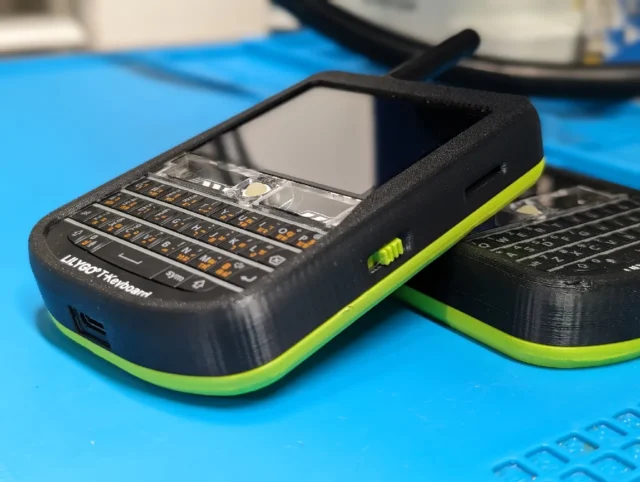A mobile device that was ahead of its time
In the evolution of mobile communication, certain devices stand out not just for their technical capabilities but for the bold steps they took toward future innovations. The Ericsson R250s PRO, released in the early 2000s, was one such milestone. At a time when mobile phones were still focused primarily on voice calls and SMS, this rugged handset introduced something truly revolutionary: Push-to-Talk (PTT) over GSM networks.
Designed for professional and industrial users, the R250s PRO bridged the gap between traditional mobile phones and radio communication systems. With its dedicated PTT button, robust construction, and GSM-based communication, it can rightfully be considered one of the first PoC (Push-to-Talk over Cellular) devices in the world.
Technical overview – What made the R250s PRO special?
The R250s PRO was engineered to operate in harsh environments while offering features that went beyond standard mobile communication. Its design and functionality set the tone for what would later evolve into modern PoC radios.
Key specifications:
| Feature | Description |
|---|---|
| Network | GSM 900 / 1800 MHz |
| Design | Rugged, rubberized exterior |
| Protection | IP54 certified – dust and splash resistant |
| PTT Function | Half-duplex Push-to-Talk over GSM |
| Display | Monochrome LCD with backlight |
| Battery | High-capacity, long-life battery |
| Ports | External antenna, headset, data cable |
Unlike traditional radios, the R250s PRO used the public GSM network to transmit voice in a half-duplex mode, meaning users could talk and listen, but not simultaneously. This allowed for nationwide coverage, a significant improvement over the limited range of analog PMR (Private Mobile Radio) systems.
A forerunner of modern PoC systems
The Ericsson R250s PRO laid the foundation for today’s digital PoC radios, offering features that were well ahead of their time. While it lacked data services or application support, its core functionalities echoed the core philosophy of PoC:
1. GSM-based radio communication
Unlike conventional two-way radios that required licensed frequency bands, the R250s PRO operated over GSM networks, providing instant communication without range limitations.
2. One-touch voice communication
A dedicated PTT button enabled immediate voice transmission to one or multiple recipients — ideal for fast-paced work environments.
3. Built for industrial use
Its rugged housing and IP54 rating made it resistant to dust, moisture, shocks, and vibrations — ideal for construction sites, logistics hubs, and utilities.
4. Wider coverage than analog radios
Since the device leveraged existing cellular infrastructure, it offered far greater geographic coverage than most PMR systems.
Use cases and target industries
The Ericsson R250s PRO was primarily aimed at professional and industrial users who needed reliable, instant communication in challenging environments. Some of the key application areas included:
-
Logistics and transportation – fleet coordination and dispatch
-
Construction and mining – communication across large or hazardous sites
-
Security and facility management – real-time group communication
-
Utility services – field teams and control centers
These sectors had long relied on analog radios, but the R250s PRO offered a more flexible and scalable solution without the need for frequency licenses or dedicated radio infrastructure.
Comparing the R250s PRO to modern PoC devices
| Feature | Ericsson R250s PRO (2000) | Modern PoC Radios (2020s) |
|---|---|---|
| Network | GSM 900/1800 | 4G / 5G / Wi-Fi |
| Voice quality | Basic but reliable | HD audio with noise cancellation |
| Group calls | Yes, limited | Yes, dynamic and programmable |
| GPS | Not available | Standard feature |
| Data capability | Minimal (GPRS or none) | Full LTE, VoIP, video capable |
| Applications | None | Android OS, app support |
| Security | Basic | Encrypted, remote management |
Although rudimentary by today’s standards, the R250s PRO was technologically revolutionary for its time and remains a critical milestone in the development of mobile-based voice communication.
Legacy and impact on the communication industry
The legacy of the Ericsson R250s PRO lives on in today’s advanced PoC systems. Devices like the Motorola WAVE PTX, Hytera PNC370, and ICOM IP503H all owe part of their design philosophy to early PTT-capable mobile phones like the R250s PRO.
It introduced several key concepts:
-
Mobile network-based voice dispatch
-
Hybrid device architecture (phone + radio)
-
Durability and field-readiness as a standard
By merging mobile telephony with instant voice communication, the R250s PRO helped blur the lines between phone and radio — a trend that continues to shape the future of professional communication tools.
A collector’s gem and a piece of tech history
While the Ericsson R250s PRO is no longer in production, it has found its place in the world of vintage mobile devices and technology museums. Collectors and tech enthusiasts often seek it out for its historical significance and rugged build quality.
For professionals in telecommunications, industrial safety, or radio systems, the R250s PRO remains a symbol of how innovation and necessity can converge to create new communication paradigms.
Image(s) used in this article are either AI-generated or sourced from royalty-free platforms like Pixabay or Pexels.
Did you enjoy this article? Buy me a coffee!






